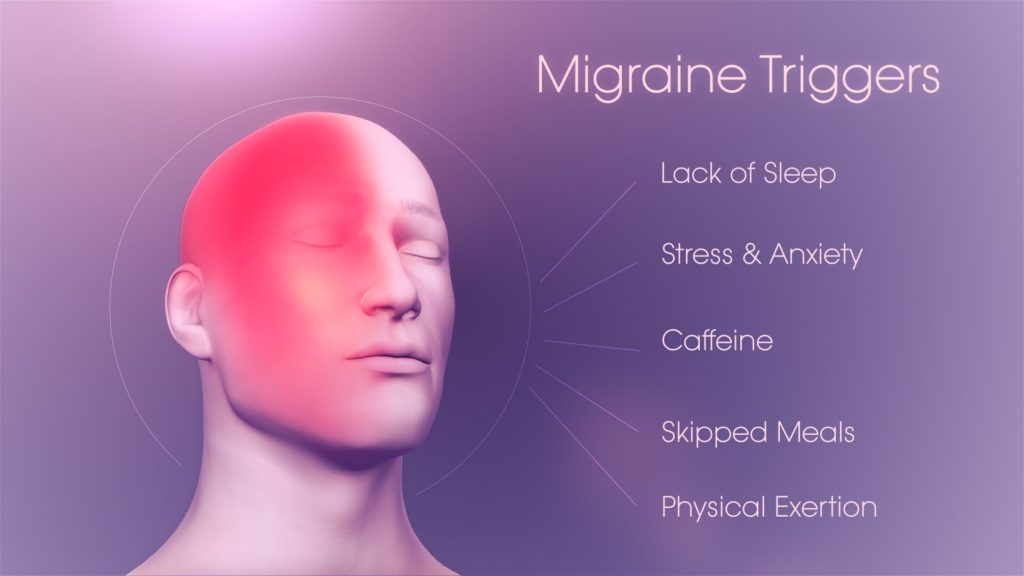FEATURED
Migraine: Common Causes, Symptoms & Treatment.

About Migraine

Migraines are headaches with extreme pain and often nausea,Migraine attacks can last for hours to days, and the pain can be so severe that it interferes with your daily activities.
For some people, a warning symptom known as an aura occurs before or with the headache. An aura can include visual disturbances, such as flashes of light or blind spots, or other disturbances, such as tingling on one side of the face or in an arm or leg and difficulty speaking.
Causes

Though migraine causes aren’t fully understood, genetics and environmental factors appear to play a role. Researchers are studying the role of serotonin in migraines. Other neurotransmitters play a role in the pain of migraine, including calcitonin gene-related peptide (CGRP).
- Hormonal changes in women. menstrual periods, pregnancy and menopause, seem to trigger headaches in many women.Hormonal medications, such as oral contraceptives and hormone replacement therapy, also can worsen migraines.medications.
- Drinks. Alcohol, especially wine, and too much caffeine, such as coffee.
- Stress. Stress at work or home can cause migraines.
- Sensory stimuli. Bright lights and sun glare can induce migraines, as can loud sounds. Strong smells — including perfume, paint thinner, secondhand smoke and others — trigger migraines in some people.
- Sleep changes. Missing sleep, getting too much sleep or jet lag can trigger migraines in some people.
- Physical factors. Intense physical exertion, including sexual activity, might provoke migraines.
- Weather changes. A change of weather or barometric pressure can prompt a migraine.
- Medications. Oral contraceptives and vasodilators, such as nitroglycerin, can aggravate migraines.
- Foods. Aged cheeses and salty and processed foods might trigger migraines. So might skipping meals or fasting.
- Food additives. These include the sweetener aspartame and the preservative monosodium glutamate (MSG), found in many foods.
Symptoms Of Migraine

- The main symptom of migraine is the headache of a pulsating nature, most often, pain occurs in one half of the head, but it can be bilateral. The frequency of occurrence of migraine attacks may be different as well as its intensity.
- In addition to pain in the head, the patient has a feeling of nausea, which can lead to vomiting.
- Photophobia and intolerance to loud sounds may also occur.
Migraine Treatment
There are two potential approaches depending on a person’s diagnosis. Both use injections in the head, neck and shoulders and target the nerve network that transmits the pain of a migraine.
- Botox for migraine
- Who it’s for: People with chronic migraines for whom traditional treatments are unsuccessful
- Goal: Long-term pain relief
- Duration: Injections are typically repeated every 3 months as long as needed
- How it works: It’s believed to be absorbed and taken up by the muscles and nerves of the head, keeping the nerves from sending pain signals
- Benefits:
- No serious side effects
- Eliminates need for daily medication
- Cumulative improvement – effect is better with each treatment
- Nerve block for migraine
- Who it’s for: People with migraines starting a new treatment, or who can’t take traditional medications for a time (such as during pregnancy)
- Goal: Relieve pain until another treatment or preventative medication takes effect
- Duration: Each injection offers relief for anywhere from several days to a few weeks or months
- How it works: Injections are targeted at the nerves in the area where the headaches occur and prevent pain signals from traveling along them
- Benefits:
- Fast relief
- Performed in an office visit rather than an ER
- Allows people to avoid powerful pain medications that may have serious side effects
Control pain so it doesn’t control you.
Talk to a doctor if headaches are impacting your quality of life
Examining symptoms and performing tests can allow a doctor to find the right treatment for a specific person
Controlling pain gives people control
Without migraine pain, people are free to enjoy everyday life and be present for important moments







